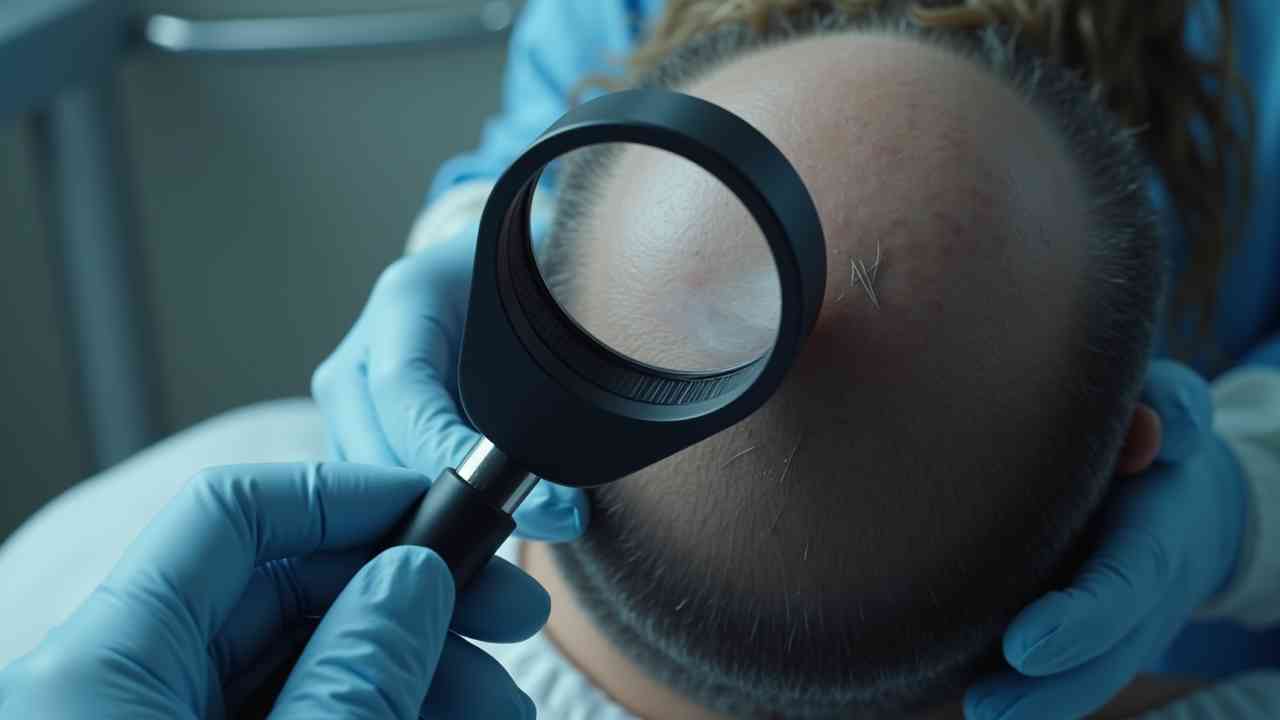
🩺 Skin Cancer on the Scalp: A Dermatologist's Guide to Signs & Prevention
🩺 A Dermatologist's Guide to Skin Cancer on the Scalp 🩺
❗ CRITICAL MEDICAL WARNING: Any new, changing, crusty, or non-healing spot on your scalp must be evaluated by a board-certified dermatologist. Self-diagnosis is extremely dangerous. Early detection is the key to successfully treating skin cancer. This guide is for informational purposes only and is not a substitute for a professional medical examination.
When we think about sun protection, we often focus on our face and arms. The scalp is one of the most forgotten, yet most vulnerable, areas of our body. Skin cancer on the scalp is very common, and because it can be hidden by hair, it is often discovered at a later, more dangerous stage.
This guide will explain why the scalp is so high-risk. We will also cover the warning signs to look for and the crucial steps for prevention. Your health is the top priority. ✅
🤔 Why is the Scalp a High-Risk Area?
The scalp is a prime location for skin cancer for a few key reasons. Understanding these risks is the first step toward better protection.
- Direct Sun Exposure: Your scalp is at the very top of your body. It receives the most direct, intense UV radiation from the sun.
- It's Hard to See: It is very difficult to check your own scalp thoroughly. This means that suspicious spots can grow for a long time without being noticed.
- Hair Doesn't Always Protect: While a full head of thick hair provides some protection, a part line, a bald spot, or thinning hair leaves the skin completely exposed and vulnerable.
- What Are the Types and Warning Signs?
All types of skin cancer can appear on the scalp. It is crucial to know the signs. Ask a family member, friend, or hairstylist to help you check your scalp regularly.
What is Actinic Keratosis (AK)?
This is a pre-cancerous growth. On the scalp, it often feels like a rough, sandpapery, or scaly patch that you can feel better than you can see.
What is Basal Cell Carcinoma (BCC)?
This is the most common type of skin cancer. On the scalp, it might look like a pearly or waxy bump, a persistent pimple-like sore that won't heal, or a flat, scar-like area.
What is Squamous Cell Carcinoma (SCC)?
This is the second most common type. It can appear as a firm, red nodule, a scaly patch, or a sore that repeatedly crusts over and bleeds.
What about Melanoma?
This is the most serious and deadly form of skin cancer. On the scalp, it can appear as a new, dark spot or as a change in an existing mole. You must use the ABCDEs to check for warning signs: Asymmetry, irregular Border, uneven Color, Diameter larger than a pencil eraser, and Evolving or changing.
- How Can You Protect Your Scalp?
Prevention is the most powerful tool you have. Protecting your scalp from the sun is a non-negotiable daily habit.
1. Wear a Hat: This is the number one, most effective form of protection. A wide-brimmed hat is best. A baseball cap is good, but remember to protect your ears and neck as well. 🧢
2. Use Sunscreen: If you have thinning hair or a wide part, you must apply sunscreen to your scalp. A spray sunscreen is often the easiest to apply without making your hair greasy.
3. Seek Shade: Stay out of the direct sun during the peak hours of 10 a.m. to 4 p.m.
Even the less intense sun of the autumn season is still powerful enough to cause DNA damage. Sun protection is a year-round commitment. If you find anything suspicious, make an appointment with a dermatologist immediately. It could save your life. 🩺